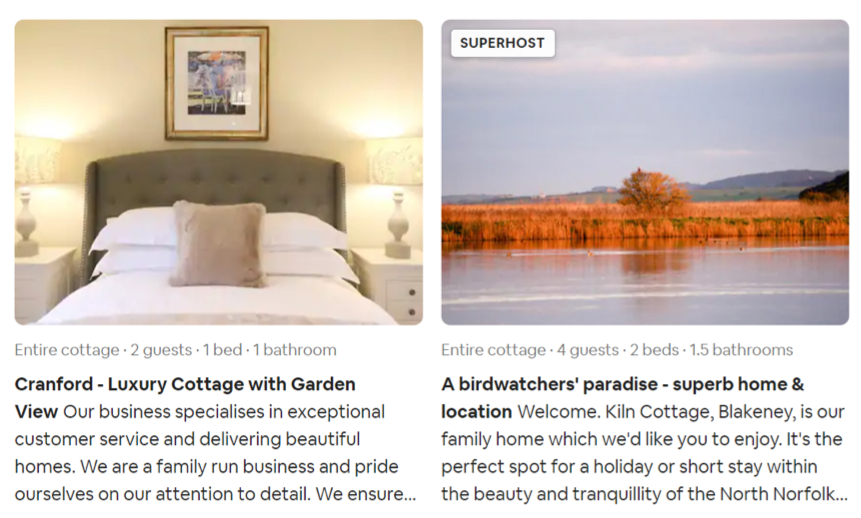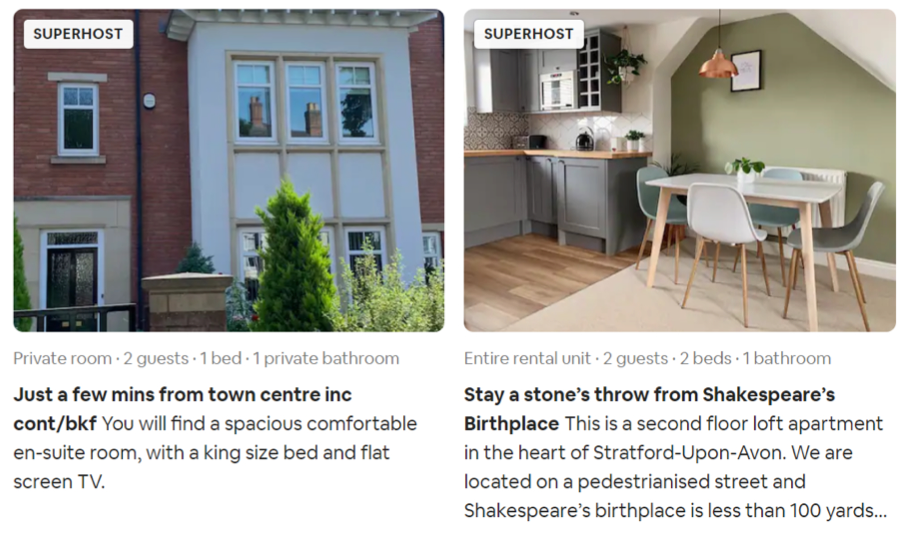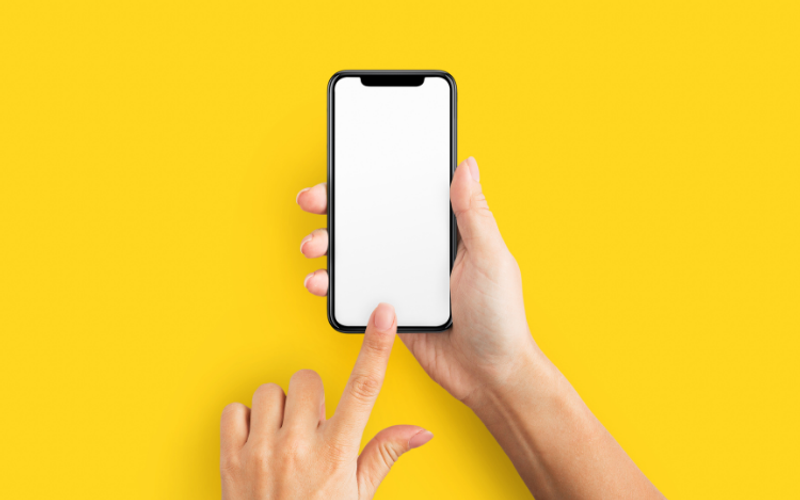6 Tips to Improve Your Property Listing Description
12 November 2021 - 9 mins
12 November 2021 - 9 mins

Property listing descriptions are an indispensable tool for holiday-makers deciding where to stay.
There’s one massive difference between the usual process of renting a property and booking a holiday. It’s the ability to actually view the property you’ll be staying in!
Given this, property listing descriptions are an integral part of generating bookings. Together with photos and reviews, they build a complete picture of your vacation rental.
A great property listing description will go a long way to building your business. So with this in mind, here are six key tips (with a few superstar examples) for improving your vacation rental description.
Before we get into key tips, it’s important to outline what a property listing description is.
This refers to the copy you’ll enter on online travel agencies (OTAs), but of course you can apply the same principles apply to your Rentalsystems property page.
The main components are:
Let’s go!
Your headline is the primary way to catch prospective guests’ attention. So pull them in and give them a reason to click!
Use positive, descriptive words to explain your property type, exact location and any special amenities or nearby attractions. For instance, instead of “Villa 3, Bay Lake, Florida” – try “Family-sized villa with games room and pool – 5 minutes to Disney World.”
Make the most of word-counts and avoid generic (ahem, boring) adjectives such as “good” or “pleasant” in your title.
Top Tip: Write 5-10 alternative headlines and try them out on friends and family – asking for their feedback. You never know what ideas might come up.
Understanding your target audience is an essential for creating an effective property listing description. If you’re not clear who your guests are and what they’re looking for – how can you appeal to them?
Ask yourself the following questions to define your target audience and key selling points:
Take a look at these examples from the Norfolk coastal village of Blakeney. It’s a tranquil haven popular with nature-lovers and birdwatchers. Whilst they’re both good descriptions, one directly appeals to this audience. Which do you feel is more successful?

Top Tip: Having thought about your “perfect guest” – go back and look at your vacation rental headline. Does it effectively appeal to your target audience? If not, it might be time for a re-write.
Different guests all have unique needs. For instance, a family visiting an amusement park will want different things to honeymooners or adventurous hikers. When writing your property listing description, remember who you’re talking to and what they’re looking for.
This will help you identify your key selling points. This could include open fireplaces, Jacuzzis, children’s playrooms, free parking, fast-Wi-Fi for business travellers (or demanding teenagers!) or pet friendly properties. Anything that makes your property unique or appealing!
Put your most attractive selling points at the start of your description. Take this Lanzarote villa listing for example:

Private villa, safe gated wrap-around gardens, heated pool, a fun putting green, beautiful and romantic sea and mountain views – yet a quiet, family-friendly location?
We know all this before we’ve even scrolled down to the main description! It’s a splendid example of “front loading” a vacation rental’s key selling points and grabbing guests’ attention.
Have you noticed anything about the way this article is written?
This is all part of “search engine optimisation” or writing for the web. Guests will read your property listing description online, so make the experience a good one!
Break your copy down into key chunks and subheadings. This will allow guests to quickly scan to the information they need.
To give an example, take a look at this St. Lucia villa. The property description utilises sub-headings, short paragraphs and bullet points to make navigation easier. It includes an initial overview, before listing the key features of the villa (breaking this down into sub-headings for the ground floor, first floor and exterior grounds) as well as the location – everything a potential guest wants to know!
Top tip: Are there any phrases you think people are searching for? Research with google keyword planner and include these phrases (keeping things natural) in your writing. Take this article for example. How many times does the phrase “property listing description” appear?
Want to learn more about SEO? Check out our article on SEO for your vacation rental site!
Now this doesn’t mean overstating the features of your vacation rental. Any misleading information will just result in disappointed guests and bad reviews. Instead, we mean fully using character counts to sell your property.
Provide as much relevant information as possible. Try to create a “virtual guided tour” with words – all backed up with high-quality photography of your property and the surrounding area.
For instance, instead of “3 bedrooms, 2 bathrooms, large veranda” – consider…
Walking into the property, you’ll immediately come to a spacious, light-filled bedroom on your right-hand side. This master bedroom boasts a luxury ensuite bathroom and large veranda leading onto the verdant, manicured garden. Continuing through the property and up the stairs, you’ll find the remaining two bedrooms – one equipped with bunkbeds (perfect for our younger guests) and the other featuring a comfy bed that can be used as two twins or one double (just let us know, and we’ll ensure this is all made-up for your stay!).
Last but not least, remember a property listing description isn’t all about your property! Guests are booking a holiday to enjoy walks, beaches, restaurants, pubs, museums… you get the picture. So what is it about your local area that tourists love?
Be specific. Take a look at these two examples in the historic town of Stratford-upon-Avon (famed as the home of William Shakespeare). One gives a generic “town centre” description – but the other is just a “stone’s throw” from Shakespeare’s birthplace! Now which one is more likely to appeal?

Top Tip: Remember you can update your property listing description throughout the year. If there are seasonal events your rental is perfect for – mention these. What about a major food festival? Hikers might flock to your area during autumn, whilst beach-goers will stick to the summer. Keep seasonality in mind, being aware your target audience might change over time.
Are you currently writing a property listing description for your vacation rental? Join the Rentalsystems Facebook group to connect with other owners and learn how to generate more direct bookings for your property.

Want to become a vacation rental marketing pro in ten minutes? Read on!

Want people to discover your website on Google but not sure how? Read this handy guide!